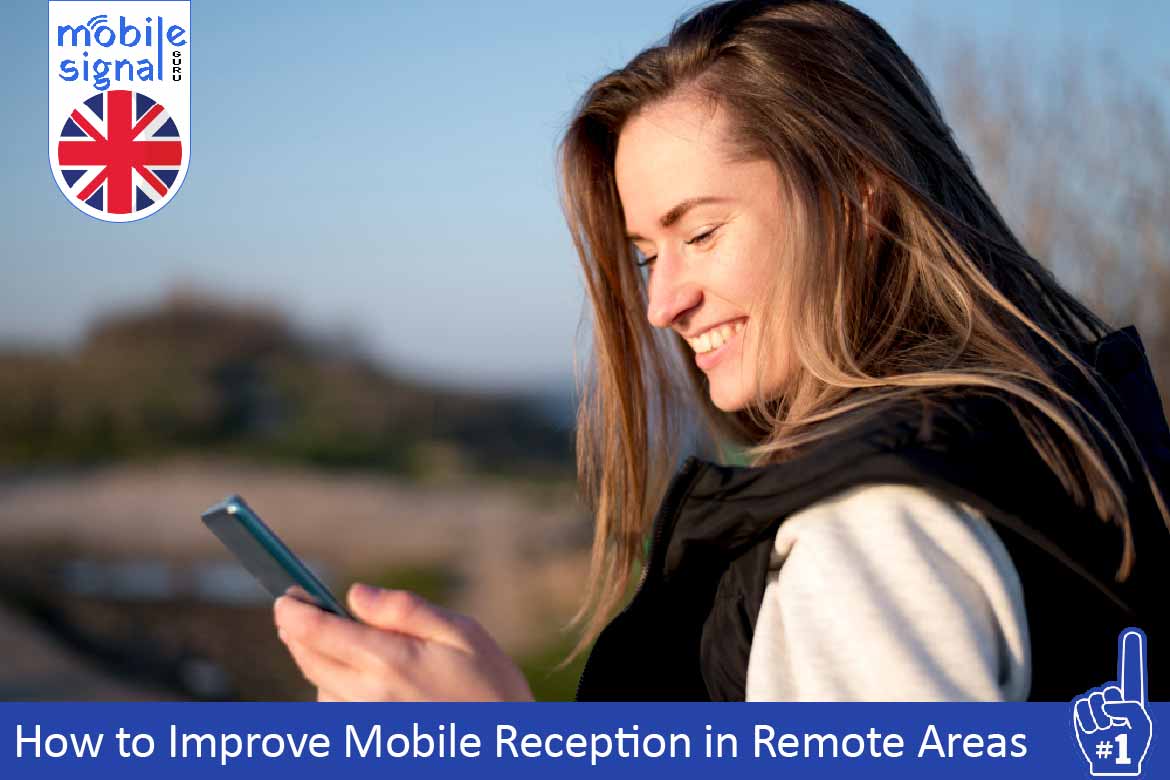Living in remote areas often means enjoying peace and nature. However, one common issue many face is poor mobile reception. In the UK, where rural and remote locations are widespread, improving mobile signal can be essential. Whether it’s for work or staying connected with family, having reliable reception matters. Here’s a guide to help you improve mobile reception in remote areas.
1. Check Your Network Coverage
The first step is to determine which mobile network has the best coverage in your area. The UK has several major operators, including EE, Vodafone, O2, and Three. Each of these networks provides coverage maps on their websites, so you can easily check signal availability for your specific location.
Tip: If you’re in a very remote location, consider using a network that specializes in rural coverage, such as EE, which often performs better in countryside areas.
2. Use Wi-Fi Calling
Wi-Fi calling is a great solution for remote areas with weak cellular reception but a reliable internet connection. Most mobile operators in the UK, such as Vodafone, EE, and O2, offer this service. It allows you to make and receive calls and texts using your Wi-Fi network instead of a mobile signal.
How to Enable Wi-Fi Calling:
- Go to your phone settings and search for “Wi-Fi Calling.”
- Turn the feature on, and your phone will automatically switch to Wi-Fi when cellular reception is low.
3. Install a Mobile Signal Booster
If you have some signal, even weak, a mobile signal booster can amplify it. A signal booster works by capturing the weak signal from a nearby cell tower, amplifying it, and redistributing it in your home or office. This help improve mobile reception in remote areas significantly.
For remote areas in the UK, it’s important to choose the right booster that works with your network and frequency band. The most common bands in the UK are 800 MHz (4G), 900 MHz (2G and 3G), and 1800 MHz (4G). Make sure your booster supports the correct bands to avoid compatibility issues.
Key Benefits of a Signal Booster:
- Enhances voice call clarity.
- Improves mobile internet speeds.
- Supports multiple users at the same time.
4. Use a Directional Antenna
If you live far from the nearest cell tower, a directional antenna like the LPDA antenna is highly effective. These antennas focus on receiving the signal from a single direction, usually toward the cell tower. By pointing it directly at the source, it captures weak signals more effectively and improves mobile reception in remote areas.
How to Install a Directional Antenna:
- Mount the antenna outdoors, preferably on the roof.
- Point it toward the nearest cell tower (you can use apps or tools to find the tower’s direction).
- Connect it to your mobile phone or signal booster.
5. Position Your Phone Near Windows
Obstructions like thick walls, trees, or even metal roofs can weaken the mobile signal. One simple solution to improve mobile reception in remote areas is to position your phone near a window, as this often provides better signal access. Try different spots in your home to find the strongest signal area.
6. Switch to a 4G or 5G Network
Older 2G and 3G networks are being phased out in many parts of the UK. Upgrading to a 4G or 5G network can significantly improve your mobile reception, especially if your mobile operator prioritizes these newer technologies in rural areas. Ensure your phone supports these networks and your SIM card is updated.
7. Use a Femtocell or Small Cell Device
A femtocell is a small cellular base station that provides coverage in a limited area by connecting to your broadband network. It essentially creates a mini cell tower inside your home, boosting mobile reception in weak-signal areas. Some UK operators, like Vodafone with their Sure Signal device, offer femtocells for areas with no coverage at all.
How Femtocells Help:
- Provide reliable coverage in homes with no signal.
- Work with your existing mobile network.
- Easy to install and configure.
8. Switch Mobile Networks if Necessary
Sometimes, one network simply works better than another in certain locations. If your current mobile operator is not providing sufficient coverage in your remote area, consider switching to a different provider. Some networks, like EE and Vodafone, have better rural coverage compared to others. Always check the coverage maps before making a switch.
9. Keep Your Phone Updated
Regular software updates can improve your phone’s performance, including its ability to connect to mobile networks. Make sure your phone’s operating system and apps are up to date to get the most out of your mobile connection.
Conclusion: Stay Connected Even in Remote Areas
Improving mobile reception in remote areas of the UK may seem challenging, but several effective solutions are available. From installing signal boosters and directional antennas to using Wi-Fi calling and femtocell devices, you have many ways to stay connected. By identifying the best option for your specific location and needs, you can ensure reliable mobile reception, no matter how remote your area is.
Whether for work, emergencies, or just staying in touch with loved ones, improving your mobile signal can make life in rural and remote areas much easier. Choose the solution that fits you best and enjoy seamless mobile connectivity.
 Australia (AUD)
Australia (AUD) Denmark (DKK)
Denmark (DKK) France (EUR)
France (EUR) Germany (EUR)
Germany (EUR) Ireland (EUR)
Ireland (EUR) Malta (EUR)
Malta (EUR) Netherlands (EUR)
Netherlands (EUR) New Zealand (NZD)
New Zealand (NZD) Norway (NOK)
Norway (NOK) Spain (EUR)
Spain (EUR) Sweden (SEK)
Sweden (SEK) UAE (AED)
UAE (AED) Global Site (USD)
Global Site (USD)
